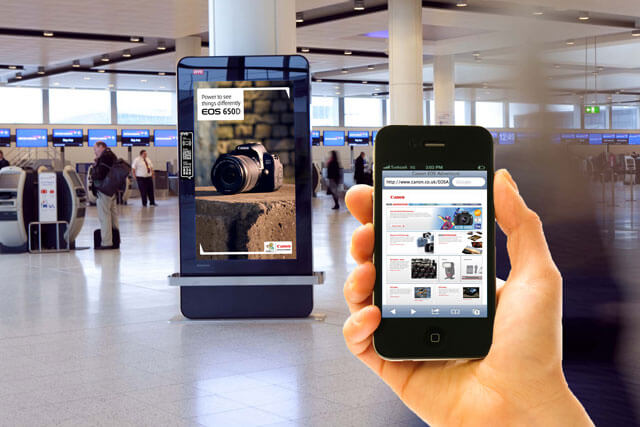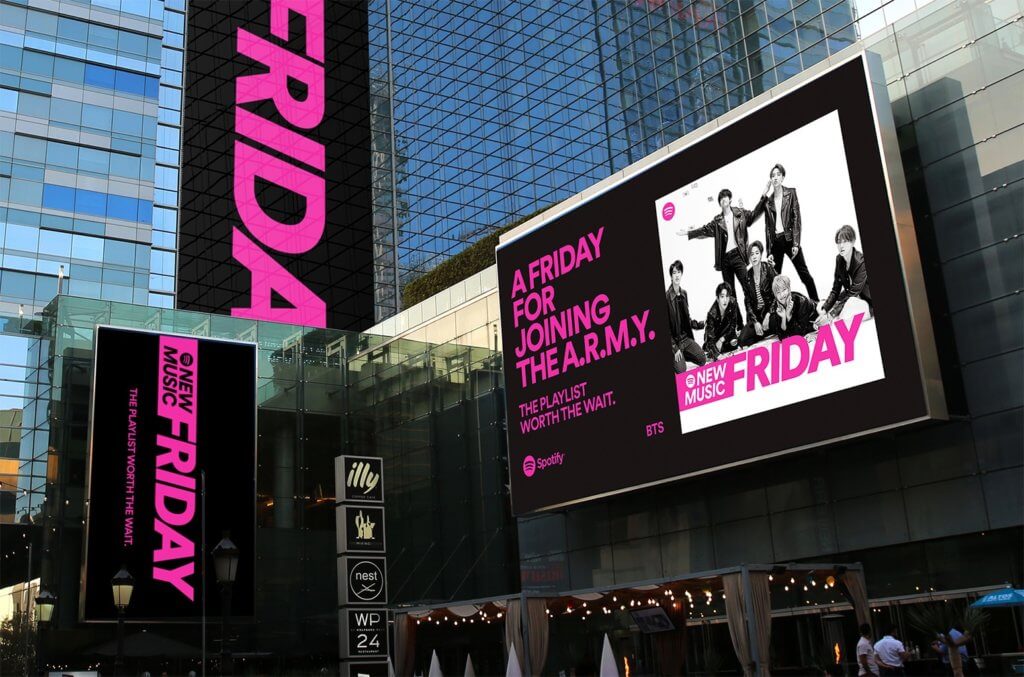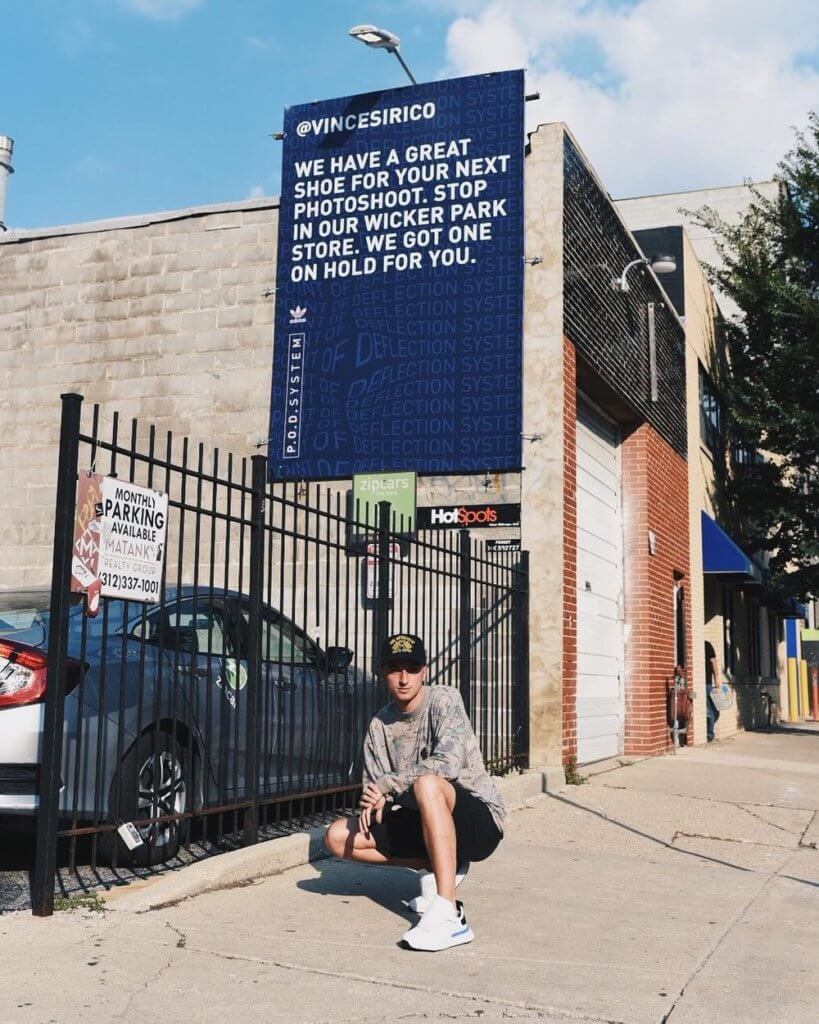
When thinking about Out-of-Home (OOH) or digital marketing, most of the time we don’t link the two together or think about the ways they can complement each other. One offers advertisements in a more traditional manner, and the other is focused primarily on online ads and social media. However, the two actually work in unison to create an ideal campaign that will ensure a high number of impressions. Many advertisers believe that they don’t need any other medium because all of their leads come from their website, but what’s driving consumers to their website to begin with? The truth is, 46% of US adults have used an internet search engine to look for more information after seeing an OOH advertisement during a six month period. Additionally, 40% have visited a Facebook page, or posted a message on Facebook after seeing an OOH ad. In this article, we will uncover the ways in which OOH, mobile media, and digital marketing go hand in hand with statistics and examples to back it up.
A Nielsen study, in collaboration with OAAA, showed that OOH is the most efficient offline medium for generating online activations for Google search, Facebook, Twitter and Instagram. The study also revealed that the outdoor space, which is shared with consumers at a time when they are highly engaged with search and social media, opens a great opportunity for OOH to trigger online activity. OAAA’S Nancy Fletcher expressed her voice on the matter by saying, “OOH’s connection to digital media is undeniable, OOH campaigns boost online engagement more than other traditional media can. As digital ad spend increases, so does OOH’s because it drives people in the real world online.”
Mobile Media – A Game Changer
As consumers walk by an OOH advertisement that catches their attention and peeks their interest, they want to find out more about the product or service being advertised. The first thing they are going to do is pick up their mobile phone and hit the search button. Mobile search is increasing in importance so much so that 68% of mobile use happens while people are on the go. Here is where OOH plays a major role in determining what consumers will search for depending on how appealing the ad was to them. Picking the best moment to make a connection with consumers is as crucial as the ad itself. People’s ever-changing habits show that there is an increasing demand for instant information and instant, reactive interaction. Mobile phones make it possible for consumers to instantly gain more information, engage with the brand via social media, and in ideal scenarios, create momentum for the ad by sharing it through social media and QR codes. A combination of these factors results in reaching a digitally-savvy audience that is primed for OOH communication during their path-to-purchase and triggers online activity. Research from the MRI/Simmons report shows that an OOH audience is the most likely to be engaged with their mobile phone. Proving that OOH is directly linked to mobile phone usage. The study also found that exposing OOH to heavy mobile device users can double weekly audience and grow exposure to nearly 100%. This gives important insights for OOH advertisers to consider heavy mobile users in their target audience to maximize their campaign efforts. It’s clear that mobile search is of great importance in today’s world, since consumers are highly engaged with search, Facebook, Twitter, and Instagram, especially when they are out of their homes. Consequently, this creates the perfect opportunity for OOH ads to work in sync with digital ads to meet the consumers on and offline – creating an all around impactful advertising experience.
What OOH Can Do For Online Campaigns and Vice Versa
By combining OOH with digital marketing, advertisers can benefit greatly for a number of reasons:
1. A Smart Indicator
Whether some consider it to be an invasion of privacy or a helpful shopping tool, mobile data from consumer’s smartphones can provide many helpful insights for advertisers. The new Geopath location measurement tools provide useful data on the demographics, traffic counts (pedestrian included), the speed by which someone drives by, and trip information. Advertisers can use third party data that can give an in-depth profiling of audience segments based on the behaviors of those driving or passing by. An audience profile might be “in the market for a car,” for example. The profiling would be a result of the consumer’s phone being located in several car showrooms recently. Advertisers can now target a very specific, well-measured audience. In this way, Digital Out-of-Home (DOOH) ads can instantaneously adapt to target consumers based on the information generated from sources such as carrier data, mobile ad networks, GPS, mapping apps, sensors, and beacons.
2. Retargeting Potential Consumers
Not only can advertisers and marketers target the right audience based on the data provided by their mobile phones, but they can also use mobile phones to retarget advertisements using geofencing. Geofencing is the use of GPS or RFID technology to create a virtual geographic boundary that enables advertisers to identify those who are exposed to the OOH ad as their mobile device acts as the indicator. Why is this important? Consumers exposed to an OOH ad are 48% more likely to click a mobile ad after seeing the same OOH ad. This is especially important since it is becoming increasingly difficult to reach consumers via online ads. In fact, over 30% of smartphone users use ad blockers. Therefore, retargeting consumers who are already familiar with the ad increases the chances of engagement, that’s if they haven’t already googled the ad on their own. For more information on how mobile retargeting is leveraging OOH advertising, check out this article.
3. When in Doubt, Trust OOH
As mentioned earlier, the online world is overwhelmed with ads and as a result, consumers are using ad blockers to avoid irrelevant ads. There is a high correlation between negative attitudes towards advertising and the use of ad blockers. However, when consumers come across content that is relevant and interesting to them, they are willing to disable their adblockers. But how can advertisers gain the viewers trust and attention long enough to disable their ad blockers? When combining OOH and digital marketing, it gives the ad an added value that sets it apart from the average digital ad. OOH gives the perception that it is a trusted brand. OOH offers a real world experience, which resonates more with consumers and gives them a sense of authenticity – something that is often missed in our digital world today. As mentioned earlier, consumers are more likely to click on a digital ad after being exposed to it on an OOH ad first. As a result, OOH directly drives click-through rates. Research from Campaign, shows that mobile click-through rates increase by up to 15% when supported by OOH. Additionally, a study from Outsmart revealed that the uplift in smartphone brand action increases to 38% among the top best performing campaigns within the study. It’s important to also note that the audience that had the highest results were Millennials and Gen Z. In conclusion, the study results demonstrate how OOH plays an integral part in driving conversions. In total, 66% of smartphone actions taken directly correlated with the brand advertised, leading to website visits and search queries.
4. OOH Leads, Consumers Follow
As OOH drives online engagement, digital ads can reinforce the message over and over again, adding frequency and recall to the message. When an ad uses unified creatives both online and offline to deliver messages, consumers will eventually take notice. The greater the recall, the higher the engagement, the higher the probability for action to be taken, and as a result, a higher ROI. According to Nielsen’s Out-of-Home Activation Study, OOH is considered the best medium for online engagements per dollar spent compared to other mediums. The results mentioned earlier of consumers who performed online searches or engaged in social media platforms after viewing an OOH ad, truly speak for themselves. With the use of hashtags and QR codes, consumers are eager and willing to interact with OOH advertising using their smartphones. OOH has stepped into a loop of positive brand exposure that works in such a way that when an OOH ad is impactful enough, it will be shared on social media. When shared on social media, it creates even more engagement towards the OOH ad, resulting in photos of the ad going viral, reaching an unimaginable level of exposure. By creating an OOH ad with a message that people want to share, brands motivate user-generated content and consumers feel a personal connection with the brand, which brings the brand free promotions and more positive feedback their way.
Spotify – New Music Friday Campaign

Spotify launched the campaign, “New Music Friday”, in New York City, Los Angeles, and Toronto. Artists with new albums were selected to take part in the campaign. The marketing for New Music Friday was created using layouts that work well with OOH, social media, artist-generated social, and the Spotify platform. The purpose was to create unique images of the artists that could be instantly recognized as part of Spotify’s ad campaign. Social media played a huge part in the campaign as the featured artists shared the photo of themselves on these billboards to reach the millions of fans that follow them on social media, all with the Spotify logo on the bottom. Spotify has been launching extraordinary OOH campaigns for some time, using the many benefits that come with linking digital marketing with OOH. Some billboards were even localized, where the message resonated with the listening preferences of local residents, such as: “Dear person in the Theater District who listened to the Hamilton soundtrack 5,376 times this year. Can you get us tickets?” In this way, the ad was able to create a deeper connection with the key demographic.
Modsy and Movia Campaign
Movia partnered with Modsy, a virtual online interior design company, to create their first outdoor campaign by launching a truck-side ad campaign. With Modsy being an online company, they did not abide by the idea that sticking to online mediums is the only way to promote their services. Instead, they took advantage of OOH to achieve their desired results. And it paid off! With 10 trucks over 14 weeks, they were able to garner 58 million impressions. By using Movia’s mobile beacon technology, Modsy was able to track and retarget consumers, leading to 1.2 million online impressions and a 14% higher online click-through rate. The campaign was able to achieve both brand awareness and sales results – a true success story that showcases what OOH can do for an online business.
Adidas – Influencing On and Offline

Adidas launched a campaign using OOH and social media that brought out the best of both worlds. Adidas called out to influencers through texts written on billboards where they used the “@” symbol followed by their Instagram handle, inviting them to make an appearance at their new store location where a surprise would be waiting for them. In a matter of hours, the billboards were being shared all over social media. The excitement of the influencers having a billboard dedicated to them reflected on the millions of people who follow them. Using the influential power of social media and the momentum that an OOH ad has to offer, these two truly are a match made in heaven!
The Bottom Line
OOH advertising captures the authenticity and credibility that’s missing from the digital world. On the other hand, online ads connect you to the digital world of social media and e-commerce. However, the two together can create a multitude of benefits that surpass those of each alone. With OOH leveraging new technology, campaign ads are becoming more relevant and responsive than ever, setting them apart from other mediums. By combining OOH and digital media, advertisers are able to reinforce the messaging, extend their reach, and provide targeted frequency that keeps consumers engaged and interested. In a field where connection is key, connecting brands with their desired audiences using one powerful medium brings forth great results. Now imagine what two extraordinary and complimentary mediums can do!


